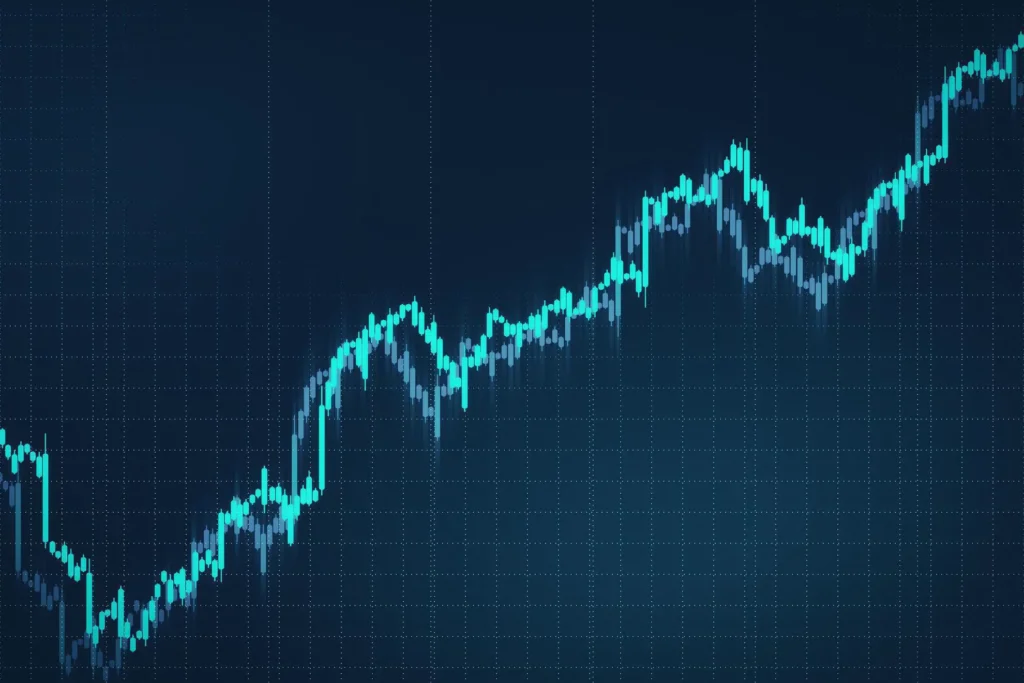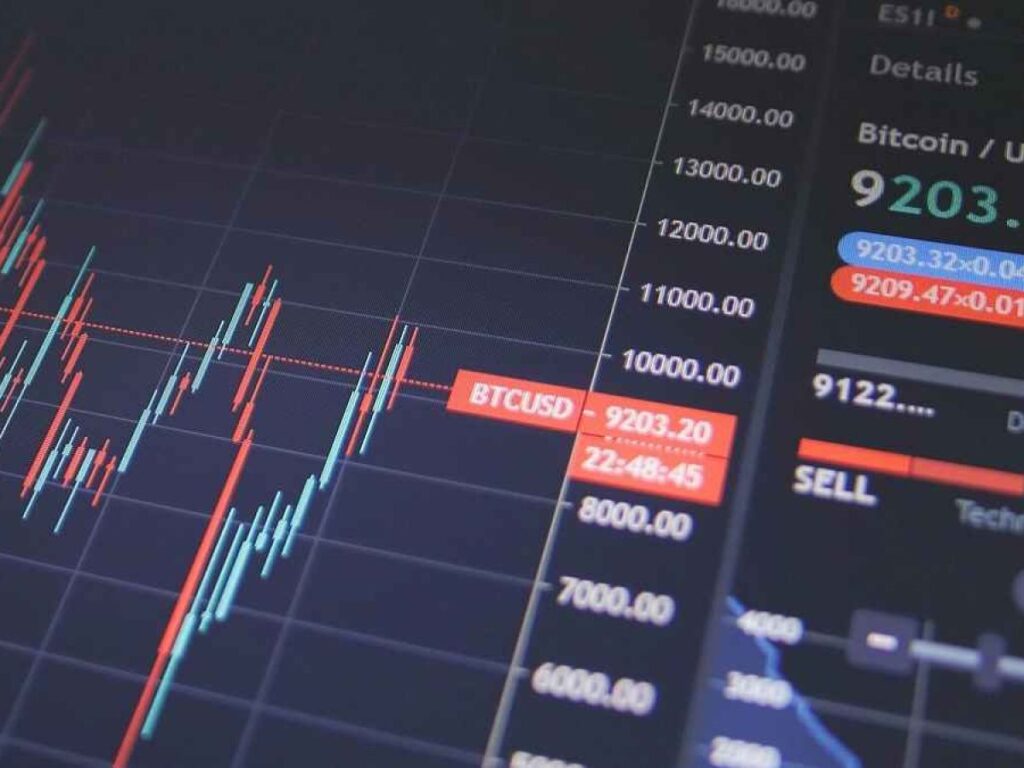Statistical arbitrage, commonly abbreviated as StatArb, emerged in the financial world during the 1980s, with Morgan Stanley and various other banking institutions playing a pivotal role in its development. This strategy gained considerable traction in the finance sector, maintaining its prominence for over two decades as various models based on it were developed to reap substantial profits.
In simple terms, Statistical arbitrage is a collection of algorithmic trading strategies driven by quantitative analysis. These strategies aim to capitalize on the relative price movements across a multitude of financial instruments. This is achieved by meticulously analyzing price patterns and discrepancies between financial instruments.
It’s important to note that Statistical arbitrage differs from high-frequency trading (HFT) strategies. Instead, it falls under the category of medium-frequency strategies, with trading activities spanning from several hours to a few days.
This article delves deeper into the nuances of statistical arbitrage, offering insights and detailed information about this complex financial strategy.
What Does Arbitrage Mean?

Source: medium.com
In the intricate world of finance, the term “arbitrage” frequently surfaces, often surrounded by discussions of profit-making and market efficiency. But what exactly does this term mean, and how does it function in the financial ecosystem? Let’s dive into the concept to understand its implications and applications.
The Concept of Arbitrage
At its core, arbitrage involves the simultaneous buying and selling of assets in different markets or forms to capitalize on differing prices for the same investment. The essence of arbitrage lies in its ability to exploit market inefficiencies for a risk-free profit. It’s about buying low in one place and selling high in another almost instantaneously.
How Arbitrage Works
Arbitrage opportunities typically arise from market imbalances. For example, suppose a currency on two different liquidity providers or Forex brokers has a different price. In that case, Forex arbitrage software like SharpTrader can buy the currency at a lower price on one liquidity provider and sell it at a higher price on the other, thus earning a profit from the price difference.
This concept isn’t limited to stocks alone. It can apply to bonds, commodities, currencies, or any financial instrument traded in multiple markets. Arbitrageurs, the traders who engage in arbitrage, are constantly looking for price discrepancies across different markets.
Types of Arbitrage
- Spatial Arbitrage: Taking advantage of price differences in different locations and for example, buying a commodity in one country where it’s cheaper and selling it in another where it’s more expensive.
- Temporal Arbitrage: Exploits price differences occurring at different times. This can involve buying undervalued security due to short-term factors to sell when its price realigns with its intrinsic value.
- Statistical Arbitrage: This is a more complex form, using mathematical models to identify price differences. It often involves a large number of securities and more sophisticated trading strategies.
- Risk Arbitrage: Typically associated with merger and acquisition deals, traders capitalize on the price differential between the current market price of a company being acquired and the price the acquiring company has proposed to pay.
The Role of Arbitrageurs
Arbitrageurs play a crucial role in the financial markets by bringing efficiency. Their actions help ensure prices do not deviate substantially from fair value for long periods. This process helps keep markets more efficient and liquid.
Arbitrage in the Real World
While the concept seems straightforward, executing arbitrage strategies in the real world requires speed, sophisticated technology, and, often, a significant amount of capital. Also, the efficiency of modern financial markets means that arbitrage opportunities are quickly identified and closed, making it a highly competitive field.
Arbitrage, in its various forms, is a fundamental aspect of modern financial markets. It’s a strategy that, while seemingly offering risk-free profit, requires deep market knowledge, advanced technology, and the ability to act swiftly. As markets continue to evolve, the hunt for arbitrage opportunities remains a constant, underscoring the dynamic nature of finance.
Explaining Statistical Arbitrage
Statistical Arbitrage, often abbreviated as StatArb, represents a sophisticated financial strategy, weaving together mathematics, statistics, and economics elements. This strategy, rooted in complex algorithms, plays a significant role in modern financial markets. Let’s break down what statistical arbitrage is and how it operates within trading.
The Essence of Statistical Arbitrage

Source: analyzingalpha.com
At its heart, statistical arbitrage is a quantitatively driven approach to trading. Unlike traditional arbitrage that seeks to exploit price differences of the same asset across different markets, StatArb relies on complex mathematical models to identify price discrepancies between related assets. These strategies are based on the assumption that the prices of these assets will converge or diverge in predictable ways.
How Does Statistical Arbitrage Work?
The process of statistical arbitrage involves several key steps:
- Model Development: Traders develop sophisticated statistical models to identify pairs or groups of stocks whose prices have historically moved together.
- Identification of Opportunities: The models scan the markets continuously to identify instances where the price relationship between these assets deviates from the norm.
- Execution of Trades: Once an opportunity is identified, the strategy involves taking offsetting positions in the diverging assets. For example, if two stocks usually move in tandem but have diverged, a trader might buy the underperforming stock (long position) and sell the overperforming one (short position).
- Profit Realization: The trades are held until the prices of the assets revert to their expected mean, at which point the positions are closed for a profit.
Types of Statistical Arbitrage Strategies
- Pairs Trading: The most common form involving two securities. If the securities deviate from their historical price relationship, trades are made with the expectation that prices will revert to the mean.
- Basket Trading: Involves more than two securities, usually a basket of stocks, and trades are based on the statistical relationship among these stocks.
- Index Arbitrage: A strategy where traders capitalize on price differences between a stock index and a futures contract on that index.
Risks and Challenges
While statistical arbitrage can be profitable, it’s not without risks. The main challenge lies in the models themselves – if the statistical relationships upon which the models are built change, the strategy can fail. Market volatility and liquidity issues can also pose significant risks.
Technological and Capital Requirements
Statistical arbitrage requires high computational power for real-time data analysis and rapid execution of trades. Additionally, due to the narrow margins of profit involved, it often requires significant capital to be truly profitable.
The Role of StatArb in the Financial Markets
Statistical arbitrage contributes to market efficiency by correcting anomalous price deviations. However, its reliance on complex models and substantial capital makes it more accessible to institutional investors or traders with advanced technical skills and resources.
Statistical arbitrage stands as a testament to the evolving complexity of financial markets. It blends finance with advanced statistical methods to uncover and exploit subtle price differences. While potentially profitable, it demands high expertise, technological resources, and risk management skills, underscoring the increasingly sophisticated nature of trading strategies in the digital age.
How Does Statistical Arbitrage Work? A Technical Perspective

Source: soup.io
Statistical arbitrage, a cornerstone in quantitative trading, intertwines complex statistical methods with financial market strategies. This article delves into statistical arbitrage’s mathematical foundations and practical applications with formulas and graphical illustrations.
Introduction to Statistical Arbitrage
Statistical arbitrage, or StatArb, is a quantitative approach to trading that seeks to exploit temporary discrepancies in the prices of statistically correlated assets. Unlike traditional arbitrage, which exploits price differences in the same asset across different markets, StatArb focuses on the relationships between different assets.
Fundamental Concepts
Mean Reversion:
Formula:
Explanation: Here, Pt represents the asset price at time t, μ is the mean price, and ϵt is the deviation from the mean. Mean reversion suggests that prices revert to their historical average over time.
Graphical Illustration: A time series plot showing asset price convergence to the mean.
Cointegration:
Formula: Yt=α+βXt+ϵt
Explanation: This equation models the linear relationship between two assets’ prices, where Yt and Xt are the asset prices. If ϵt, the residual, is stationary, the assets are said to be cointegrated.
Graphical Illustration: A scatter plot demonstrating the cointegration relationship between two assets.
The Process of Statistical Arbitrage
Strategy Identification: Using historical data, traders identify pairs of assets whose prices have moved together historically. This could involve correlation analysis or cointegration tests.
Signal Generation:
Formula:
Explanation: Here, Pt,and Pt,2 represent the prices of two cointegrated assets, μ is the mean of their price difference, and σ is the standard deviation. A Z-score calculates how far the current price difference deviates from the historical mean.
Graphical Illustration: A plot showing the Z-score over time, indicating potential trading signals.
Trade Execution: Traders take opposing positions in the two assets when the Z-score crosses predefined thresholds, expecting the price relationship to revert to the mean.
Risk Management: We are implementing stop-loss orders and position-sizing techniques to manage potential losses.
Case Study with Real Data

Source: wealthandfinance-news.com
An example using historical price data of two stocks, illustrating the process of identifying a trading opportunity, executing trades, and exiting positions.
Statistical arbitrage is a nuanced, sophisticated trading strategy that leverages statistical analysis and historical price relationships. It’s a powerful tool in the arsenal of quantitative traders but requires rigorous risk management and technological proficiency.
Different Forms of Statistical Arbitrage
Statistical arbitrage, a complex yet intriguing trading strategy, combines advanced statistical techniques with algorithmic trading. While the core principle of statistical arbitrage is to exploit price inefficiencies through mathematical models, there are various forms this strategy can take. Each form is tailored to different market conditions and asset types. This article explores the different forms of statistical arbitrage, offering insight into their unique characteristics and applications.
Pairs Trading
- Overview: Pairs trading is perhaps the most well-known form of statistical arbitrage. It involves identifying two securities, often stocks, which historically have moved together. When their price paths diverge, traders bet on their eventual convergence.
- Mechanism: The strategy is straightforward – if one stock underperforms while the other outperforms, the trader buys the underperformer (long position) and sells the overperformer (short position), betting on the reversion to their historical price relationship.
- Application: This form is particularly popular in equity markets but can be applied to other asset classes, like commodities or currencies.
Index Arbitrage
- Overview: Index arbitrage exploits price differences between stock indices and their futures or options contracts.
- Mechanism: Traders monitor the price of a stock index and its derivatives. If a significant price discrepancy arises, they will buy the undervalued component (either the index or the derivative) and sell the overvalued one, anticipating a convergence of prices due to market corrections.
- Application: This strategy is often used by hedge funds and institutional traders due to the significant capital and sophisticated technology required.
Basket Trading
- Overview: Basket trading involves creating a basket of stocks or securities and trading based on the statistical relationship between the basket and a benchmark.
- Mechanism: Traders build a portfolio (basket) of stocks and compare its price to a benchmark index. When the basket’s price deviates significantly from the benchmark, they trade the entire basket, expecting a reversion to the historical price relationship.
- Application: This approach is used for diversification, reducing risk compared to single-stock trades.
Mean-Reversion Trading

Source: forkast.news
- Overview: This strategy assumes that prices and returns eventually move back towards their mean or average.
- Mechanism: Mean-reversion strategies involve identifying assets whose prices have deviated significantly from their historical average and trading based on the expectation that they will revert to that average.
- Application: It can be applied across various asset classes and is a core concept in many statistical arbitrage strategies.
Sector Arbitrage
- Overview: Sector arbitrage involves trading on price discrepancies within a specific market sector.
- Mechanism: Traders identify overvalued and undervalued assets within a sector, taking long positions in undervalued stocks and short positions in overvalued ones.
- Application: This form is particularly applicable in sectors with high correlation among stocks, like technology or healthcare.
Global Macro Arbitrage
- Overview: This form involves capitalizing on macroeconomic events that create price inefficiencies across global markets.
- Mechanism: Traders analyze macroeconomic trends and policies to predict their impact on different asset classes, executing trades that align with these macroeconomic forecasts.
- Application: It’s used by traders and funds focusing on international markets and requires a deep understanding of global economics.
Conclusion
Statistical arbitrage is not a one-size-fits-all strategy; it encompasses a range of approaches, each with nuances and application areas. Understanding these different forms allows traders and investors to select strategies that align best with their market knowledge, risk tolerance, and investment goals. As financial markets evolve, so do these strategies, adapting to new data, technologies, and market dynamics.



